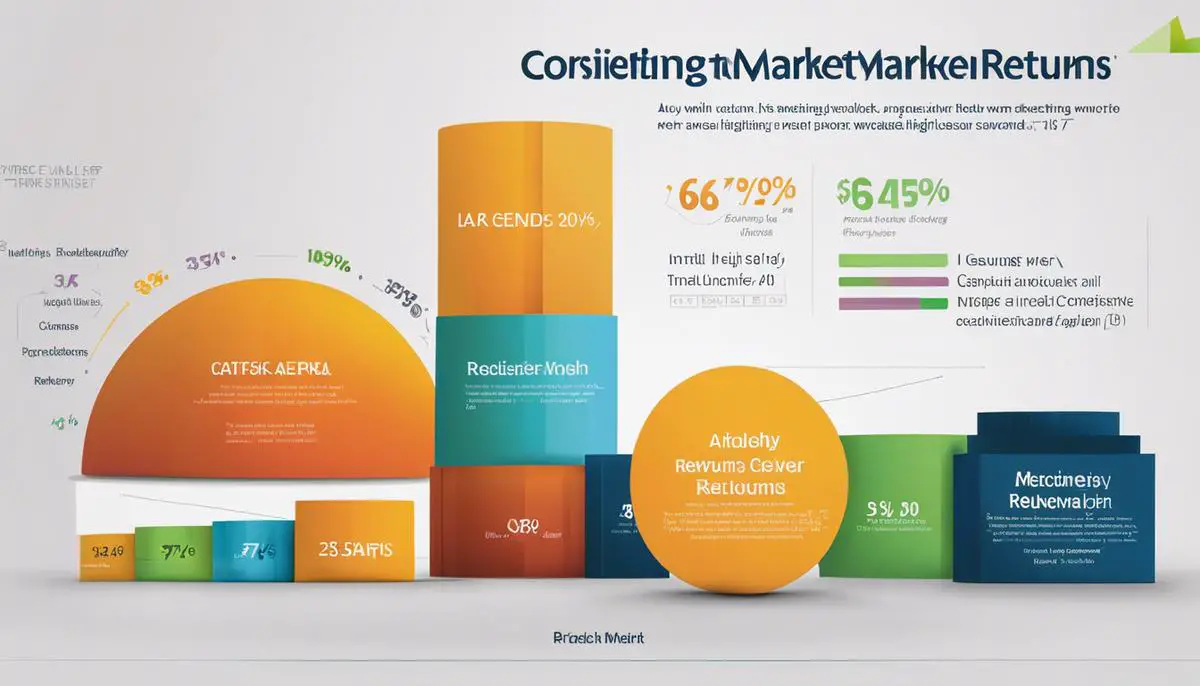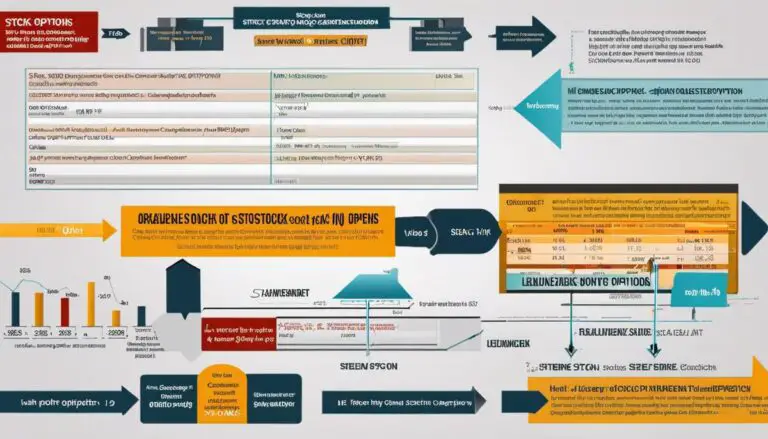Indexing investment strategy has grown in popularity and recognition over the past decades, offering a viable alternative to traditional, active investing. Understanding the ins and outs of this strategy, not only from a theoretical standpoint but also in relation to the everyday operations of index funds, is essential for the modern investor. This discussion dives deep into the very heart of indexing, detailing its main appeal, how it works in practice, and why its passive underpinnings make it a low-risk, cost-effective option for investment. Additionally, we explore the pros and cons of this approach and the innovative implementations changing the indexing landscape.
Understanding Indexing
In the ever-expanding realm of investment strategies, one core approach is making waves for its efficiency and robustness. This is indexing—the strategic alignment of portfolio assets to mimic the parameters of a specific financial market index. No financial jargon here, just simple, results-oriented strategy! A key mantra within the business and finance arena: confidently navigating the investment highway doesn’t necessitate reinventing the wheel. Sometimes, the most potent solutions are those openly available, practically staring us in the face, ready to be embraced.
The core concept behind an indexing investment strategy is in its sheer simplicity, its attraction lies in its unparalleled straightforwardness. Intriguing, isn’t it? A strategy that requires minimum oversight while offering potentially maximum returns. Less really is more with the indexing approach.
So how does this work? An index, such as Standard & Poor’s 500 Index (S&P 500) or Dow Jones Industrial Average (DJIA), is a collection of assets that reflect the performance of a particular market sector. An Index fund is constructed to mirror these indices. The objective? To closely replicate the performance of the index being tracked.
Key principle? Diversification, a fundamental nugget of wisdom echoing through the halls of intelligent investing. Why place all your eggs in one basket when you can spread the risk across several baskets, in this case, a variety of assets? This reduction of unsystematic risk is the bulwark wavering investors seek, fostering confidence through turbulent market periods.
Yet, the beauty of an indexing strategy is in the fact that it doesn’t try to “beat” the market by betting on particular stocks’ outperformance. It simply seeks to “be” the market. This passivity, counter-intuitive to traditional investment theories, can be a sophisticated investor’s best ally, particularly when we shine some light on expense ratios and costs.
Expense ratios? You bet! These pesky little percentages that sneak their way into most actively managed funds significantly eat into potential returns over the long-term period. On the other hand, index funds come with a distinct cost advantage because of their passive management. Lower costs mean higher net returns, providing much-needed capital compounding acceleration.
While the indexing strategy may not be dripping with the adrenaline rush of day-trading or the thrill of picking out the next “big thing” in the stock market, its strength lies precisely in this de-dramatization. It’s about stepping back, looking at the larger picture, picking a solid, stable index, and sticking to it. In essence, it’s about playing the long game.
This no-nonsense approach to investing isn’t an obscure tactic – industry leaders have long capitalized on it. Warren Buffett himself has been quoted advising the strategy to his estate, significantly endorsing the indexing approach as a long-term growth strategy.
In the end, while understanding the basics of an indexing investment strategy, remember this: though it doesn’t guarantee results, it buildings a sound investment foundation. In the domain of investing, where unpredictability is the only constant, mirroring the market might just be the one constant we can rely on. So don’t shy away from the index, embrace it, and let it guide your investing future.

Advantages of Indexing
The Benefits of Consistent Market Returns through Indexing
Capturing the business world’s collective action, market indices reflect the financial world’s sum total experience, wisdom, and evolution. One cannot overemphasize the value of consistently participating in this economic crucible, rather than sporadically dipping in and out. Using an indexing strategy, investors can leverage this ceaseless economic activity, ensured they are always part of the action, and riding the market coattails.
The market is a dynamic landscape in constant flux, with influences ranging from socio-political developments to technological advances. To beat the market continually is a Herculean feat even for the most seasoned professional fund managers — many of whom underperform the average market returns. Indexing, on the other hand, aligns the investor with the market, effectively hedging against the unpredictability of individual stock performance.
The sheer scale and wide reach of index funds ensure that investors are virtually plugged into the whole economy’s performance. And in an evolving economy, there will always be sectors flourishing and contributing to growth. Thus, being synchronized with the overall market, as is the case with indexing, often leads to consistent returns over long periods.
The Impracticality of Constant Active Participation
The intensity of active investment requires a robust apparatus involving researchers, analysts, traders, and portfolio managers working in tandem. While this may be feasible for large institutional investors, it is an impractical proposition for most retail investors. Index investing, on the other hand, empowers all investors to participate in the market’s growth without requiring the extensive resources active management necessitates.
Maintaining a competitive edge in active investing demands vast amounts of time and labor dedicated to market research and stock selection. Such investment often falls outside the means of individual investors. With index funds, one can circumvent these costs and requirements, providing an achievable investment strategy for all.
The Power of Compound Returns
The genius of indexing lies in participating consistently in the market’s collective action. Over time, this results in compound returns that can significantly magnify the initial investment. The potential of this compounding effect is notably higher in indexing due to its broad representation across multiple sectors and industries. It effectively harnesses the accelerating power of growth across the entire market.
From giants like the S&P 500 Index Fund to more specialized indices, investors have a plethora of options to choose from. This variety allows investors to align their goals and risk profiles with the appropriate index fund.
Conclusion
By choosing an indexing strategy, investors tap into the innate growth trajectory of the market, rather than scrambling to outsmart it. It does not promise a quick, overnight fortune but cultivates steady prospering aligned with the larger economic canvas. In the vast arena that is the market, indexing stands as a robust, accessible, and consistent investment strategy ready to serve the adroit investor.

Challenges in Indexing
Taking the road less traveled in investment strategies can stir up some dust. Amid the array of merits associated with indexing, it’s pivotal to circle back and assess the shortcomings that accompany this swift and simplistic approach to investing.
Imagine blindly stepping into a game of Chess, basing each move solely on the collective strategy of all the players you’ve ever competed with or observed. Undeniably, you’ve got an impressive collection of moves to mirror, but are those moves truly optimal when the game dynamics shift? Similarly, in the investment world, while indexing credibly mirrors the market’s movement, it fails to pivot when market dynamics change. The lack of agility in real-time can hinder potential gains and bring on unnecessary losses.
Secondly, the breadth of industry exposure within index funds can be a double-edged sword. An index fund’s investment landscape is a sprawling reflection of the market that covers various sectors. This extensive coverage inherently brings exposure to weak-performing industries or sectors, letting their drag pull down on the overall performance of the fund. While diversification dampens risk, but it also blankets performance, both good and bad.
As we dissect the challenges of indexing further, we also face the dilemma of limited influencing power. Index funds, by nature, are passive holders of shares, limiting their ability to influence corporate decision-making. Your investment mirrors the market without giving you a say. In times when a more active stance is required for sustainable investing or corporate governance, this passive approach may not suffice.
Lastly, indexing isn’t immune to tracking errors. The objective of an index fund is to match the performance of its benchmark index. However, practical constraints like transaction costs,
or holding securities not included in the index, can deviate the fund’s returns from its index. These discrepancies, albeit small, can result in the fund’s underperformance relative to its benchmark.
But how do we navigate around these bumps? One solution is the hybrid strategy of complementing indexing with a slice of active investing. This strategic blend allows you to capitalize on market inefficiencies and not merely ride with the market.
Moreover, investors can narrow down their index exposure, opting for sector or theme-specific index funds to intentionally bypass weak sectors or industries. This way, diversification is used as a tool for reducing risk but not at the expense of potential opportunities.
Investors can also be mindful of their choice of index funds. Analyzing elements like the size of the tracking error and the fund manager’s operational efficiency can ensure that the fund aligns closely with its benchmark index’s performance.
Indexing, despite its shortcomings, remains an impactful tool in the arsenal of investment strategies. After all, the essence of smart investing isn’t about avoiding risks and challenges but navigating them astutely.

Innovative Approaches to Indexing
The transformative power of innovation is a global aspect that continues to shape the investment landscape. Its influence on indexing investment is particularly noteworthy. Combining the traditional tactics of indexing—which we’ve previously discussed—and the modern advent of technology and innovation, the game has certainly changed.
Artificial intelligence (AI) is one significant innovation changing the indexing investment landscape. Using powerful algorithms and predictive analysis, AI can enhance portfolio management, increase returns, and minimize risk. Incorporating AI algorithms within index funds is an innovation that is currently on the rise and promises to do wonders for this investment strategy.
Speaking of innovation, the advent and proliferation of Exchange-Traded Funds (ETFs) over the past few years have established their crucial role in investing. Some ETFs even focus on indexing unique sectors. These electronically traded funds have breathed fresh life into the indexing strategy and allowed more flexibility and access for investors.
With the world headed toward a more digitized financial system, the emergence of blockchain technology can’t be ignored. Blockchain presents opportunities for increased transparency, security, and efficiency in financial transactions. Over time, implementing blockchain in index funds may effectively reduce operational costs, offering benefits to both fund providers and investors.
The ongoing development of Robo-advisors further enhances the efficiency of an indexing investment strategy. By automating the investing process via the application of complex algorithms, Robo-advisors can provide personalized advice, reducing management costs and offering plenty of opportunities for diversification.
Moreover, innovations in data gathering and processing are enhancing the availability of information, something that drives the indexing strategy itself. The ability to utilize big data analytics can provide insights into market trends, risk factors, and potential opportunities, which are significant factors for investors using an indexing strategy.
Lastly, digital platforms and innovative mobile applications have democratize access to investment opportunities. This democratization has resulted in increased access to well-diversified low-cost index funds for everyday investors.
Several factors are contributing to the ever-evolving nature of investing—one cannot overlook the power of innovation and technology combined in shaping the future of investing, specifically in index investments. The key is staying updated with the changes and being able to utilize these innovations effectively and efficiently in an indexing strategy. In the world of investing, the constant is change—the faster we align ourselves with this change, the more successful our approach will be.

The realm of indexing, with its array of opportunities and challenges, offers a wide space for learning, comprehension, and application. Knowledge of the indexing strategy, complete with a clear understanding of its benefits and potential difficulties, helps investors make informed decisions. It’s fascinating to see how innovation is redefining this field, introducing new concepts such as smart and thematic indices and leveraging cutting-edge technologies for streamlined operations. It is truly an interesting time to be an investor, and anyone keen on growing wealth and managing risks better would do well to keep a keen eye on the unfolding trends in the indexing world.



